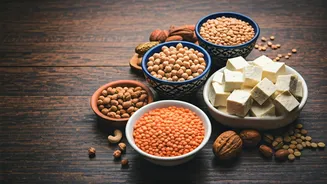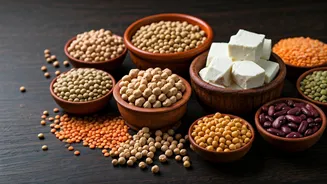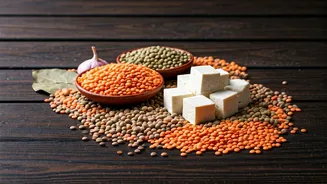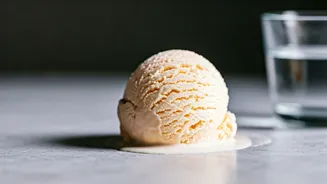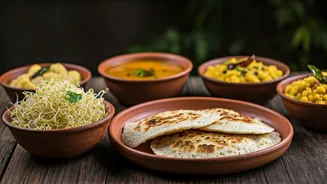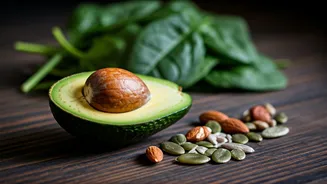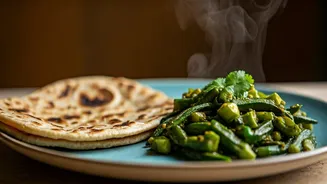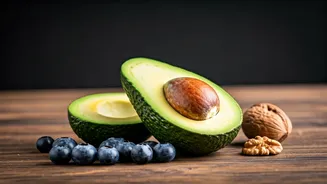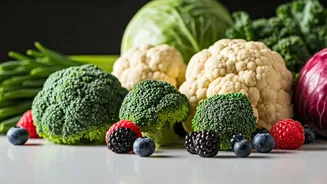Protein Power Boost
Protein is a crucial nutrient, playing a vital role in building and repairing tissues, as well as supporting various bodily functions. It aids in creating
enzymes, hormones, and other essential chemicals. Incorporating adequate protein into your meals can also help regulate appetite, thereby preventing overeating and maintaining energy levels. Finding the right protein sources is key, particularly in the context of Indian cuisine, where traditional dietary patterns might sometimes lack sufficient protein variety. This guide will reveal several plant-based alternatives and protein-rich ingredients that can be seamlessly integrated into Indian meals.
Lentils and Pulses
Lentils and various pulses, such as masoor dal (red lentils), chana dal (split chickpeas), and moong dal (split green gram), are excellent protein sources frequently utilized in Indian cooking. These provide substantial protein alongside fiber, essential for aiding digestion and maintaining steady blood sugar levels. They are versatile, easily adaptable to various preparations, from simple dals to complex curries and snacks. One can swap out meat in some preparations with lentils, like in a lentil-based keema (minced meat). Integrating these into your diet regularly enhances your protein intake while simultaneously introducing other essential nutrients, thus contributing to an overall healthier eating pattern. The availability and cultural familiarity make them a convenient option.
Tofu: A Soybean Powerhouse
Tofu, produced from soybeans, is a complete protein, meaning it contains all nine essential amino acids necessary for the body's optimal functioning. It's a versatile ingredient that can take on the flavors of the spices and sauces it is cooked in, making it a valuable addition to Indian meals. You can incorporate it in various ways, like in stir-fries, curries, or even as a filling in parathas. Tofu is low in saturated fat and cholesterol-free, making it a heart-healthy alternative to animal proteins. Consider swapping paneer (Indian cheese) with tofu in dishes like palak paneer, making it a delicious and healthier option. Remember to press the tofu to remove excess water before cooking for improved texture.
Quinoa: Ancient Grain Goodness
Quinoa, although technically a seed, is often utilized as a grain and is another complete protein source. It is easy to prepare and can be an excellent addition to Indian meals. Quinoa can be substituted for rice in dishes such as khichdi or pulao, enriching them with protein and fiber. The nutty flavor of quinoa complements Indian spices well. Moreover, quinoa is gluten-free, making it an excellent choice for individuals with gluten sensitivities. Beyond its protein content, quinoa is also rich in essential minerals like magnesium and iron, contributing to its nutritional profile. Explore using quinoa in salads, as a side dish, or as a base for vegetable preparations.
Nuts and Seeds
Nuts and seeds, such as almonds, cashews, pumpkin seeds, and sesame seeds, are packed with protein, healthy fats, and fiber. They can be added to various Indian dishes to boost their nutritional value and enhance the flavor. Sprinkle them over salads, add to curries, or use them to thicken gravies. Nuts and seeds can also be incorporated into breakfast meals like porridge or consumed as a snack between meals to keep hunger at bay. The versatility of nuts and seeds makes them an easy addition. However, since they are calorie-dense, consume them in moderation. A handful of nuts or a spoonful of seeds can make a significant difference in your daily protein intake.
Dairy Alternatives
Dairy-based products like yogurt and paneer are popular in Indian cuisine and provide protein. However, if one prefers or requires a non-dairy alternative, various options are available, such as soy yogurt, almond yogurt, or coconut yogurt. The protein content varies among different brands and products, so it is necessary to check the labels to ensure it meets your protein needs. These dairy alternatives can be easily incorporated into Indian dishes and snacks like smoothies, raita, and dips. Using these alternatives allows one to maintain the cultural aspect of dishes while also benefiting from their nutritional value and protein content, especially if you have lactose intolerance or are avoiding dairy.
